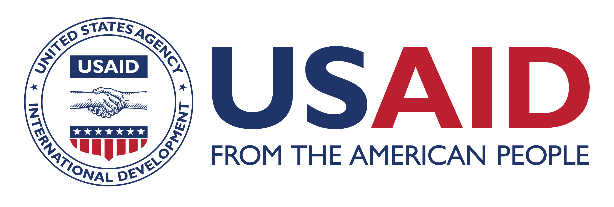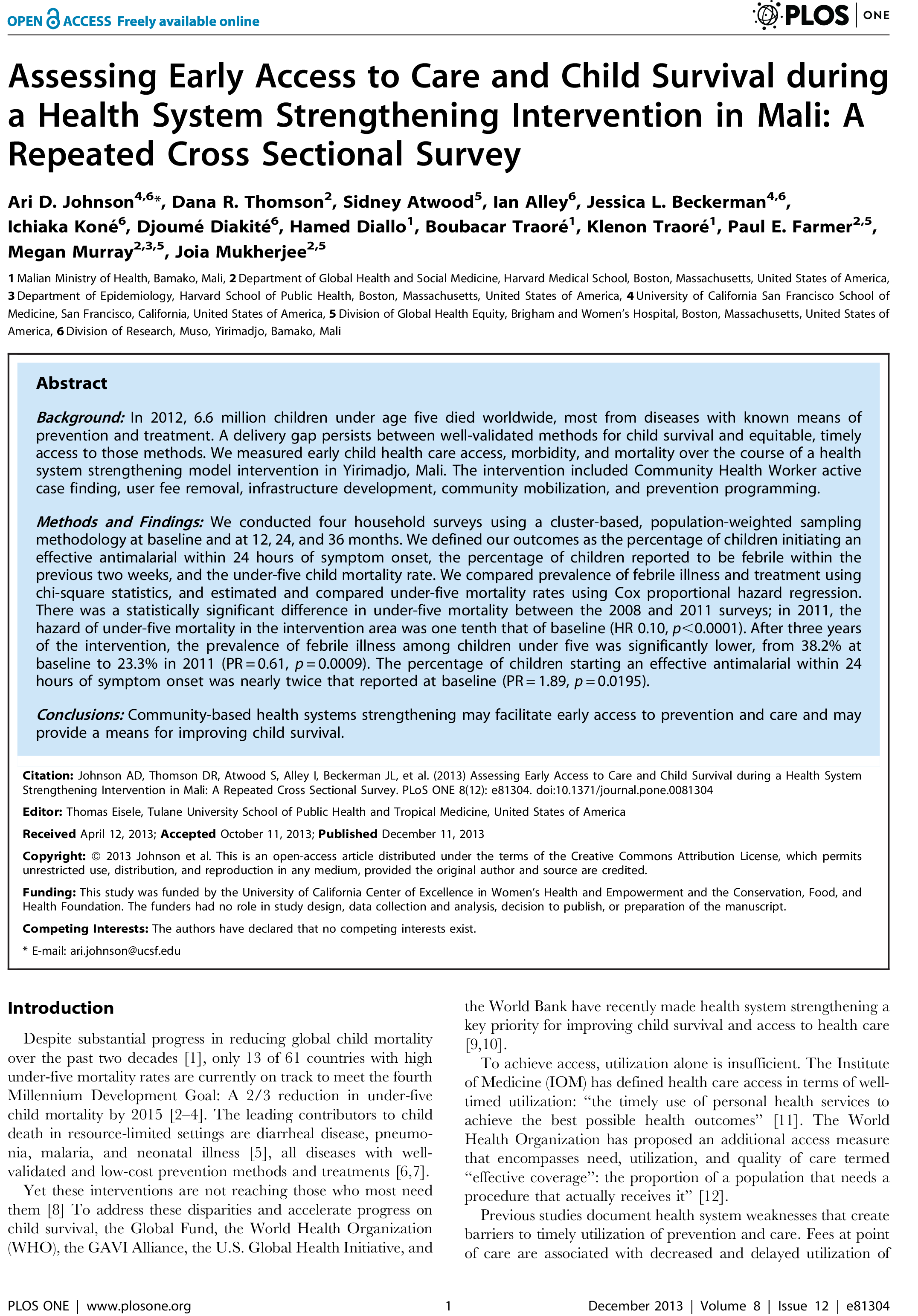
Resource Library
Assessing Early Access to Care and Child Survival during a Health System Strengthening Intervention in Mali: A Repeated Cross Sectional Survey
In 2012, 6.6 million children under age five died worldwide, most from diseases with known means of prevention and treatment. A delivery gap persists between well-validated methods for child survival and equitable, timely access to those methods. This study measured early child health care access, morbidity, and mortality over the course of a health system strengthening model intervention in Yirimadjo, Mali. The intervention included Community Health Worker active case finding, user fee removal, infrastructure development, community mobilization, and prevention programming. Four household surveys were conducted using a cluster-based, population-weighted sampling methodology at baseline and at 12, 24, and 36 months. Outcomes were defined as the percentage of children initiating an effective antimalarial within 24 hours of symptom onset, the percentage of children reported to be febrile within the previous two weeks, and the under-five child mortality rate. Prevalence of febrile illness and treatment were compared using chi-square statistics, and under-five mortality rates were estimated and compared using Cox proportional hazard regression. There was a statistically significant difference in under-five mortality between the 2008 and 2011 surveys; in 2011, the hazard of under-five mortality in the intervention area was one tenth that of baseline (HR 0.10, p,0.0001). After three years of the intervention, the prevalence of febrile illness among children under five was significantly lower, from 38.2% at baseline to 23.3% in 2011 (PR = 0.61, p = 0.0009). The percentage of children starting an effective antimalarial within 24 hours of symptom onset was nearly twice that reported at baseline (PR = 1.89, p = 0.0195). Overall the study found that community-based health systems strengthening may facilitate early access to prevention and care and may
provide a means for improving child survival.
Resource Type :
Country : Mali
Year : 2013-12-01T00:00:00
Language : English
Project : SHOPS


